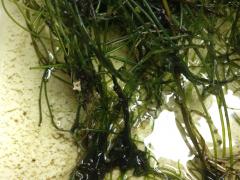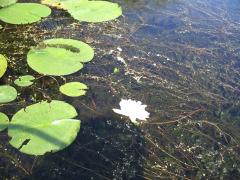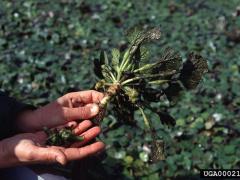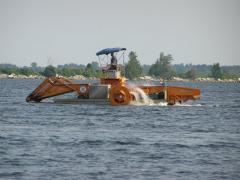New Aquatic Invasive Species Confirmed in Lake Memphremagog

Department of Environmental Conservation (DEC) staff recently confirmed the presence of starry stonewort(Nitellopsis obtusa) in a small cove on the southeast side of Lake...

Department of Environmental Conservation (DEC) staff recently confirmed the presence of starry stonewort(Nitellopsis obtusa) in a small cove on the southeast side of Lake...

As part of my job managing aquatic invasive species for the Department of Environmental Conservation, earlier this summer I traveled to Vermont’s Northeast Kingdom for a site visit to Shadow Lake in the town of Glover.

"MAYNARD Water chestnut, an invasive water plant, has a nature akin to lily pads on steroids, growing rapidly in nutrient-rich fresh water ponds, lakes and slow-flowing rivers. Unchecked, it will almost completely cover water surfaces, making boating, swimming and fishing impossible. The dense floating mat of overlapping leaves also blocks sunlight penetration, causing oxygen deprivation...

Last year we reported that spiny water flea, an invasive zooplankton, was confirmed in Lake Champlain. Analysis of all samples from August through October has now revealed the remarkable speed at which this nasty crustacean can colonize a waterbody.
Vermont is again offering grants to communities in their quest to slow the spread of overly aggressive aquatic plants.
The Department of Environmental Conservation encourages municipalities to complete online applications by Feb. 11 for funds, training and technical assistance.
Invasive aquatic species are increasingly a nuisance to swimmers, boaters, anglers — and a threat to...

The Department of Environmental Conservation is pleased to announce the availability of project year 2015 Application for Aquatic Nuisance Control Grant-in-Aid Grants. This grant program supports...
In 2012, the Agency of Agriculture, Food & Markets passed revisions to the Quarantine Rule. Below is the full press release as provided by the Agency of Agriculture, Food & Markets.